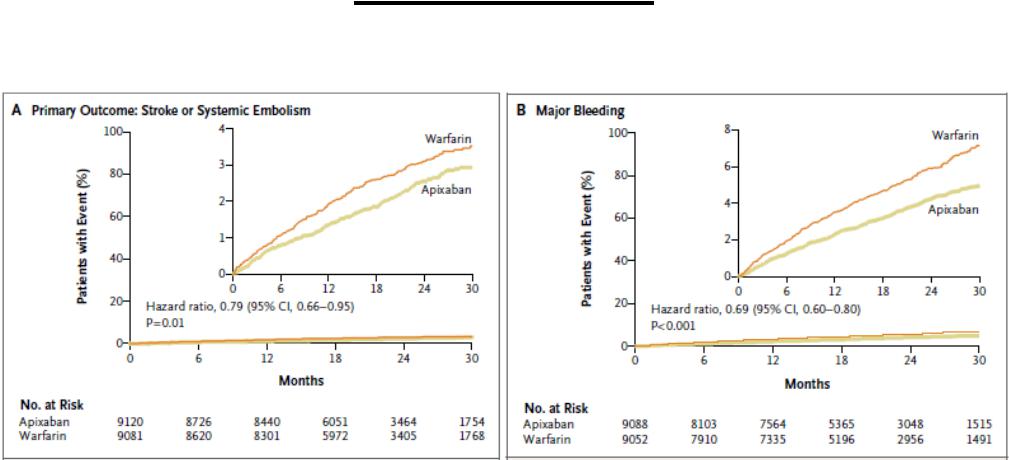
ECHO 2013 / Advanced TEE Clinical Decision Making in Cryptogenic Stroke and Atrial Fibrillation
.pdf
Atrial Fibrillation
•Most common serious cardiac arrhythmia in the community (prevalence 1% to 3-4%)
•Prevalence doubles with each advancing decade of age (from 0.5% at age 50-59 years to almost 9% at age 80-89 years)
•AF increases mortality by almost 2-fold (1.5 in men, 1.9 in women)
Kannel et al, Am J Cardiol 1998;82:2N-9N
AHA Heart Disease and Stroke Statistics, 2012 Update

Atrial Fibrillation and Stroke
•AF increases the risk of stroke by 4 to 5-fold (up to 17-fold in case of rheumatic mitral disease)
•Attributable risk of stroke of AF increases with age (from 1.5% at age 50-59 years to 23.5% at age 80-89 years)
Kannel et al, Am J Cardiol 1998;82:2N-9N
•Strokes from atrial fibrillation tend to be more severe and disabling than those from other causes

Prevention of Stroke in Atrial Fibrillation
Warfarin vs. Placebo
Hart et al, Ann Intern Med 2007;146:857-67

Prevention of Stroke in Atrial Fibrillation
Antiplatelet Agents vs. Placebo
Hart et al, Ann Intern Med 2007;146:857-67

Prevention of Stroke in Atrial Fibrillation
Warfarin vs. Antiplatelet Agents
Hart et al, Ann Intern Med 2007;146:857-67

RE-LY Trial
Dabigatran vs. Warfarin
Connolly et al, N Engl J Med 2009;361:1139-51

ARISTOTLE Trial
Apixaban vs. Warfarin
Granger et al, N Engl J Med 2011;365:981-92

ROCKET AF Trial
Rivaroxaban vs. Warfarin
Patel et al, N Engl J Med 2011;365:883-91

ACC/AHA/ESC 2006 Guidelines
(and 2011 Focused Update)
Anticoagulation in Atrial Fibrillation
CHADS2 Score
C |
= |
Congestive heart failure |
H |
= |
Hypertension |
A |
= |
Age ≥ 75 years |
D |
= |
Diabetes |
S |
= |
Stroke or TIA (double weighted) |
0 |
= |
Low risk |
(1% per year) |
1-2 |
= |
Intermediate risk |
(1.5%-2.5% per year) |
3 |
= |
High risk |
(5% per year) |
≥ 4 |
= |
Very high risk |
(> 7% per year) |
Gage et al, JAMA 2001;13:285, 2864-70
